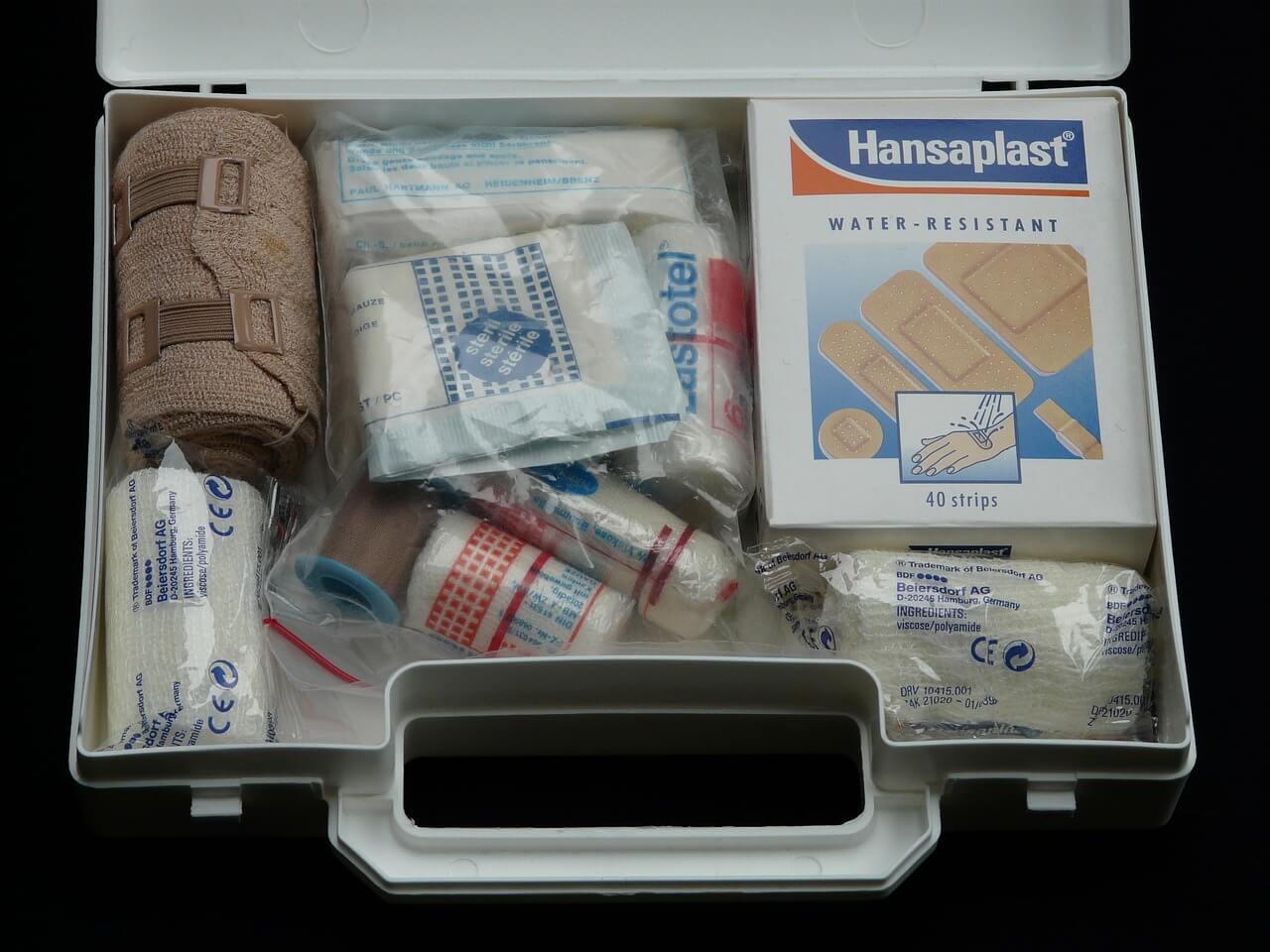
First Aid box
Accidents and injuries are common in almost every workplace; these accidents or ill health cases sometimes require immediate attention to make a difference between life and death. For this purpose, businesses and their employers have adequate assistance to provide the necessary aid their workers require in an emergency.
This blog post will walk readers through what is required in an emergency, why first aid is essential, what the law says about it, and how to prevent workplace accidents and injuries.
What is First Aid?
First aid is immediate medical assistance given to someone who has suffered from an accident, injury, or ill health. An appointed trained person usually provides first aid to assist in an emergency until professional help arrives at the location.
For employers to have dedicated, responsible persons on their work premises, they may need to provide their workers with adequate training, including online and offline training sessions.
An online first aid at work course is preferable for most companies as it saves the cost of sending their workforce out for traditional classroom training and can help them gain vital knowledge at their convenience.
Appropriate and sufficient training sessions ensure people are adequately trained and equipped to act competently in an emergency.
Legal Requirement for First Aid at Work
Having trained personnel for first aid in the workplace is, although optional for workplaces, businesses, or organizations.
However, the Health and Safety (First Aid) Regulations 1981 require companies of sizes having five or more employees, including self-employed individuals, to provide the necessary equipment, facilities, and arrangements to ensure that their workers receive immediate assistance in case of injury or accidents.
Providing adequate and appropriate first aid facilities depend on specific workplace arrangements. However, a few things that employers need to consider are:
Employers Responsibilities
The minimum first aid requirements for every business or organization are:
- A first aid box having the right tools and equipment to use in emergency
- A trained or competent person to assist in emergency
- Adequate and necessary first aid information for all employees
The law also requires employers and supervisors always to have someone available on their work premises to provide first aid assistance to anyone in need.
Start with First Aid Assessment
All employers and supervisors must carry out risk assessments in their workplace for first aid arrangements. An ideal first aid risk assessment should include the following:
- Whether or not a designated first aider is needed in the workplace
- Potential hazards in the workplace
- History of previous accidents, injuries, or ill health
- Distance to emergency services in the workplace
- Size of the company
- Work nature and the risks related to it
- Distribution of the workforce
Conducting a first aid needs assessment will help identify what type of first aid arrangements are required to mitigate the health risks and what kind of training help in creating a safe and secure work environment.
Although there are no legal requirements for employers to write down the assessment process, it may be helpful for employers to use the results of their risk assessment to justify their level of first aid provision.
Keeping the Records
Employers, self-employed individuals, and people in control of work premises have duties and responsibilities under Reporting of Injuries, Diseases, and Dangerous Occurrences Regulations 2013 (RIDDOR) to report any work-related injuries, ill health, or dangerous occurrences in the workplace.
It will help employers identify potential hazards in the workplace and what proactive approaches can help minimize the health risks.
Review the Workplace for Health & Safety Risks
Along with the steps mentioned above, employers must also review their workplace, workforce, and the potential health and safety risks they may face. Here are these:
- The work type and size of the company in terms of people & location
- Possible hazards that may occur at work
- Work patterns of the workforce, including holidays or sick leaves
- Visitors & customers in the workplace
- The work environment and the health risks associated with it
What Should a First Aid Box Include?
When it comes to having a first aid box in the workplace, there are no set requirements of what should be in it. However, an emergency first aid box should include the followings:
- A leaflet having general first aid guidelines
- Plasters
- Sterile bandages
- Disposable gloves
- Safety pins
- Large-size sterile dressings
- The sterile eye pads and other relevant equipment needed at work
To Sum it Up
Having emergency first facilities or equipment in the workplace is a practical approach to identifying and mitigating health and safety risks and providing emergency assistance until professional help arrives.
Employers and their staff members need to consider their health and their surroundings. It requires employers to appoint dedicated people to help anyone in an emergency.
Taking steps together can help control and minimize health risks efficiently, creating a safe and secure work environment.






